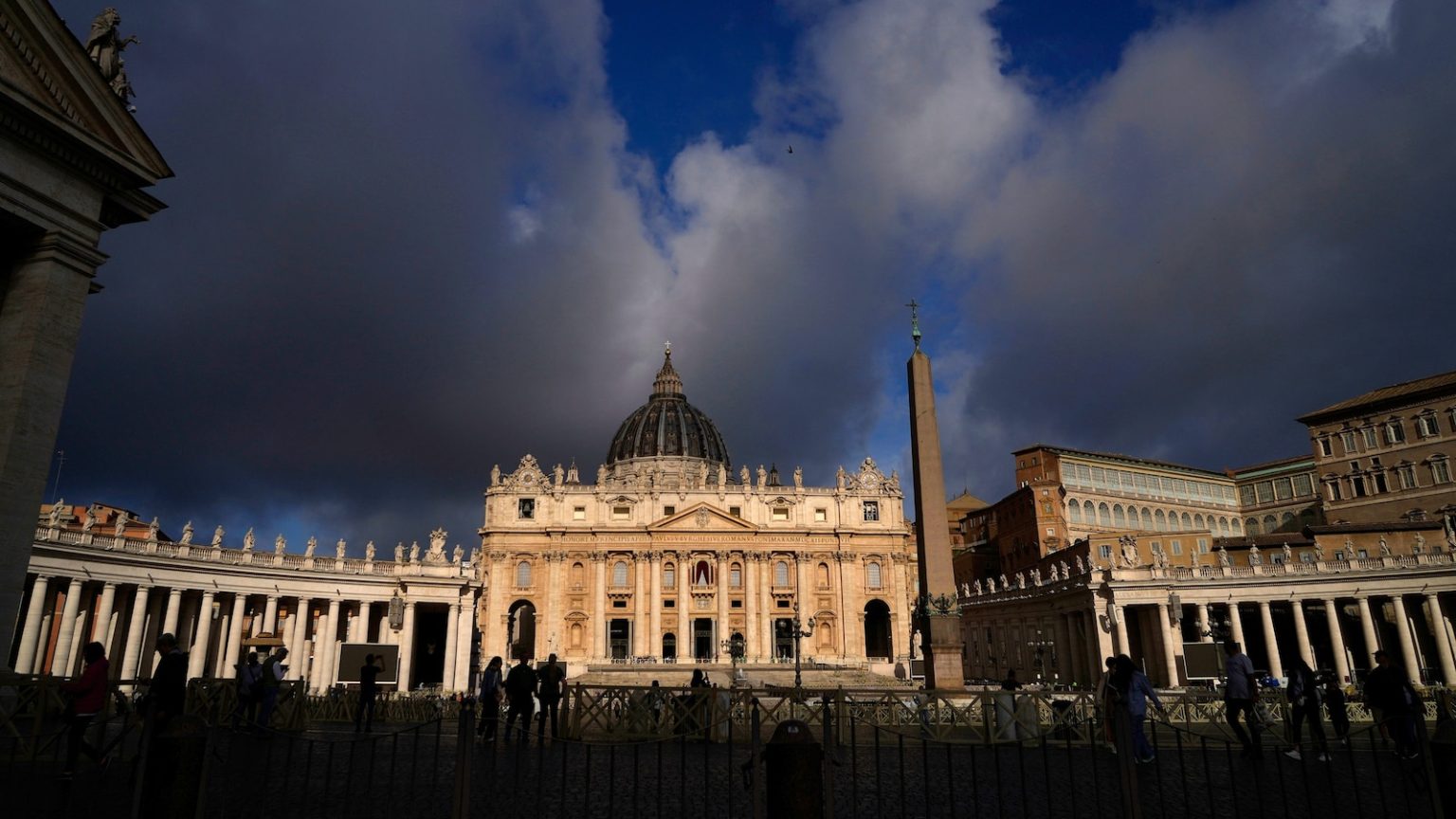The papal conclave, the secretive election process to elect the next leader of the Roman Catholic Church, commences on Wednesday, bringing cardinals from all over the world to select the 267th pope.
Since the death of Pope Francis on April 21, a total of 220 cardinals — the church’s highest-ranking clergy — have gathered in Rome to mourn the loss of the former pontiff and begin the secret conclave.
Overall, 133 cardinals will be voting during the conclave, the most electors ever, with 108 of them appointed by Pope Francis. All cardinals under the age of 80 are eligible to participate in the election process.
Clouds pass over the St. Peter Basilica at the Vatican, May 6, 2025.
Gregorio Borgia/AP
The majority of the cardinals are coming from Europe, including 17 electors from Italy, five from Spain and five from France. There are 16 cardinal electors from North America, including 10 from the United States. Additionally, there are four from Central America, 17 from South America, 18 from Africa, 23 from Asia and four from Oceania. Argentina, the home country of Francis, has four cardinal electors.
All 220 cardinals are expected to attend a mass at St. Peter’s Basilica on Wednesday morning at approximately 10 a.m. local time. The voting cardinals will then proceed to the Pauline Chapel and then process to the Sistine Chapel at approximately 4:30 p.m. local time, where the voting will take place.
Cardinal electors nations of origin
Google Earth / vatican.va
All of the cardinal electors will take an oath of secrecy before beginning to vote twice daily, two times in the morning and two times in the evening. Voting will commence when the Master of Ceremony says “extra omnes” — or “everyone out” — at approximately 5 p.m. local time. The voting will continue until two-thirds of the cardinals have agreed on a pope.
The ballots are burned after each vote and the smoke will emanate from the chimney that was built on top of the Sistine Chapel. Black smoke signifies a decision has not been reached and the voting will continue, whereas white smoke will mean a new holy leader of the church has been confirmed.
A pope could be elected as soon as the first ballot, or the process could continue for days. Since 1831, no conclave has lasted for more than four days.
Up to four rounds of voting typically take place in a day. If no clear choice has emerged after three days, balloting is suspended for 24 hours to allow cardinal electors time to reflect. Another seven rounds of balloting then takes place, followed by another break, and so on.
If no pope is elected after 33 or 34 votes — generally about 13 days — then a new rule introduced by Pope Benedict XVI decrees the two leading candidates as determined by previous ballots will engage in a runoff vote. If the candidates are members of the conclave, they cannot vote in the runoff but are present for it. Whichever candidate receives the necessary two-thirds majority of the votes is the new pope.
The Sistine Chapel on the eve of the conclave in The Vatican, May 6, 2025.
Simone Risoluti/Vatican Media/AFP via Getty Images
Cardinal Jean-Paul Vesco, the archbishop of Algiers, told ABC News it would be “unexpected” if the conclave goes past Friday.
Similarly, the cardinal of Baghdad, Louis Raphael Sako, reportedly told journalists at the Vatican last week that he expects a “short conclave.”
“It will be a short conclave, two, three days,” Sako said, as quoted by Italy’s ANSA news agency.
When asked if he had an idea of who he would vote for to become the new pope, Sako replied, “I have a very clear idea but I cannot say it.”
Names of cardinals who appear to be front-runners for the papacy have been swirling since the death of Francis.
Any baptized Catholic male is eligible to take Francis’ place, but experts said Pietro Parolin, the cardinal secretary of state, and Luis Tagle, the archbishop of Manila in the Philippines, are the top contenders.
Officials and staff assigned to the Conclave take an oath in the Pauline Chapel, First Loggia of the Apostolic Palace, Vatican City, May 5, 2025.
Vatican Media/EPA-EFE/Shutterstock
An American cardinal, Robert Prevost, has also started to emerge as a front-runner, according to Father James Martin, a papal contributor for ABC.
Overall, Martin said cardinals will be looking for “someone who is holy, someone who is a good evangelizer who can proclaim the gospel and someone who is a good manager.”
“Those three things are tough to find in one person,” Martin said Monday on ABC News Live.
During the conclave, recording technology of any kind is forbidden, with technicians checking to ensure there are no secretly installed bugs or other like devices inside the Sistine Chapel or adjacent areas. The cardinals’ cellphones will be taken away at the start of the conclave and will be returned to them after the election of the new pope.
ABC News’ Christopher Watson and Phoebe Natanson contributed to this report.


